
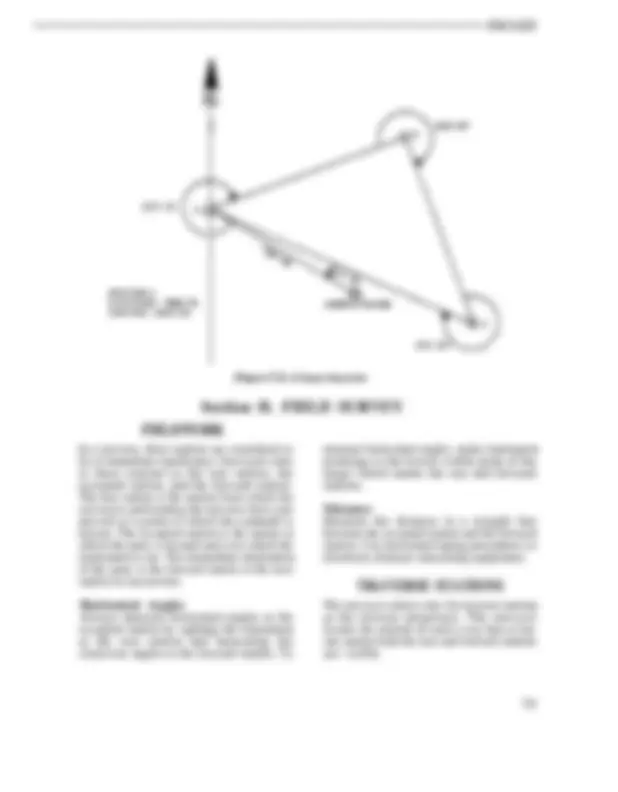
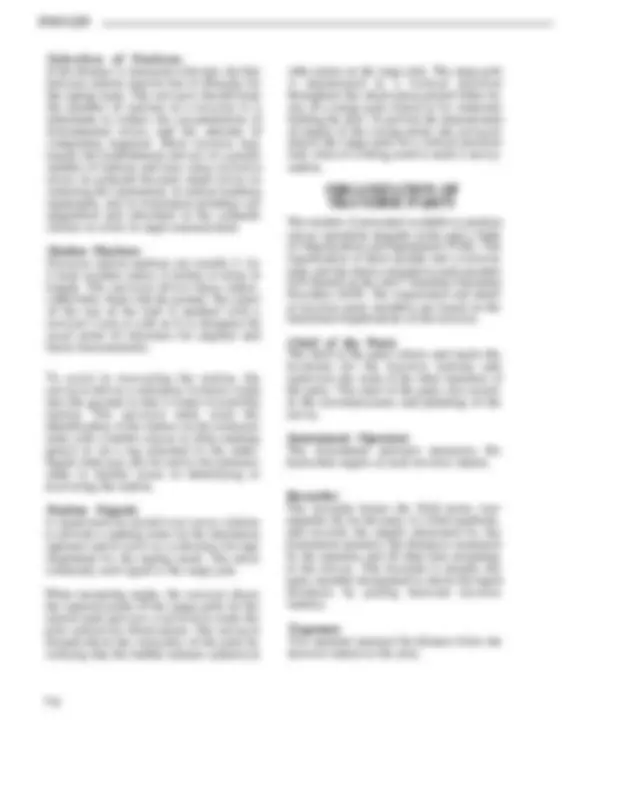
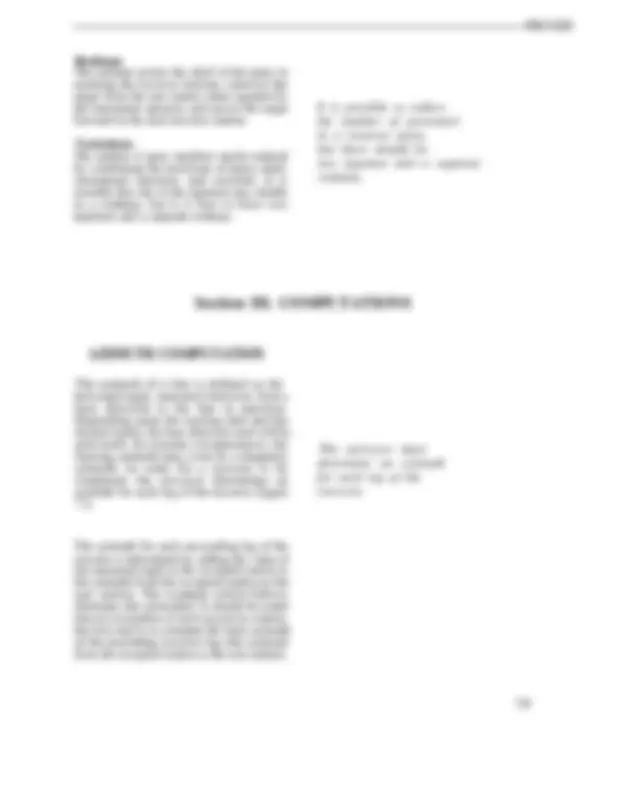
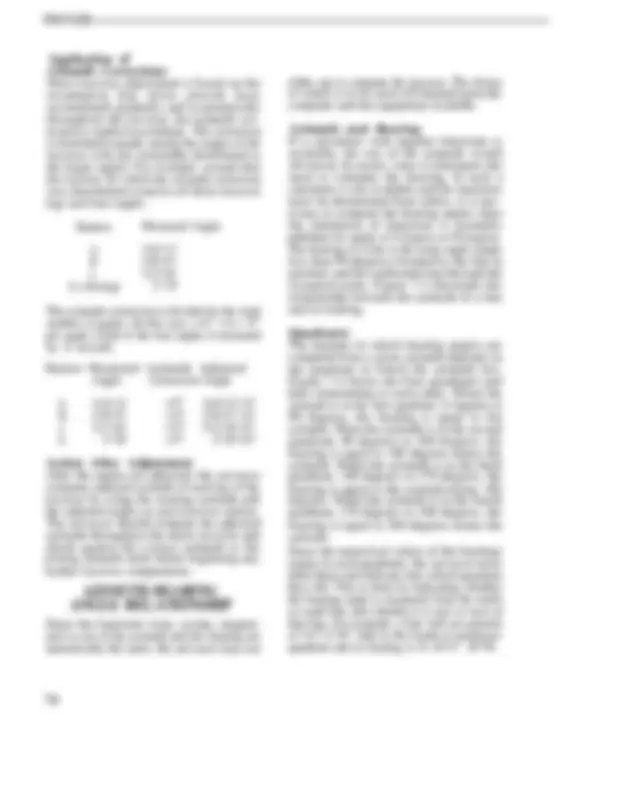
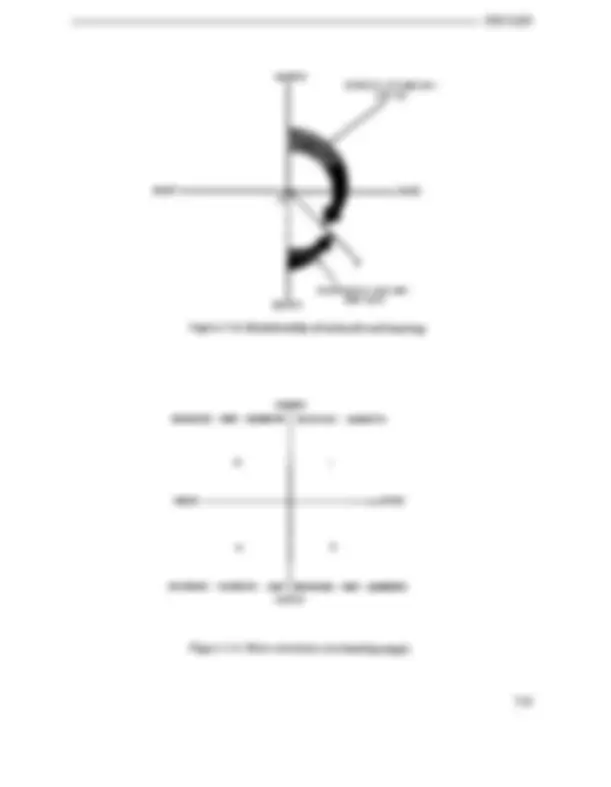
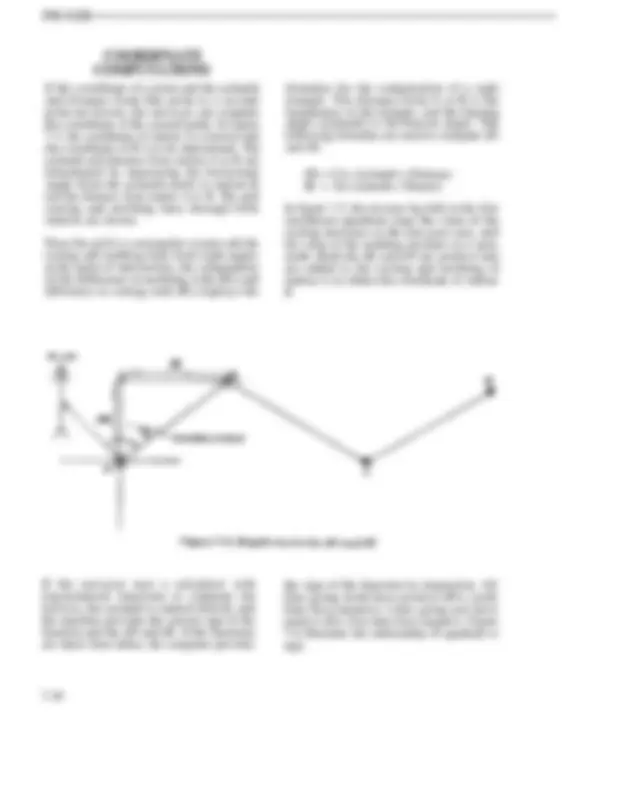
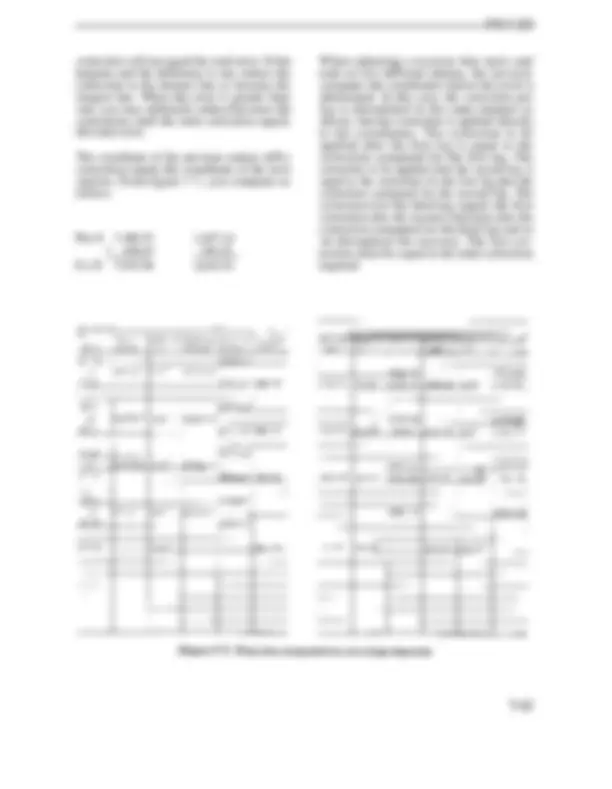


Study with the several resources on Docsity

Earn points by helping other students or get them with a premium plan


Prepare for your exams
Study with the several resources on Docsity

Earn points to download
Earn points by helping other students or get them with a premium plan
Community
Ask the community for help and clear up your study doubts
Discover the best universities in your country according to Docsity users
Free resources
Download our free guides on studying techniques, anxiety management strategies, and thesis advice from Docsity tutors
The concept of a traverse in surveying, which is a series of straight lines connecting selected points called traverse stations. the starting control, types of traverses, field survey, selection of stations, station signals, and computations. It explains how to determine azimuths for each leg of the traverse and provides an example of azimuth computation and correction.
Typology: Lecture notes
1 / 13

This page cannot be seen from the preview
Don't miss anything!








A traverse is a series of straight lines called traverse legs. The surveyor uses them to connect a series of selected points called traverse stations (TS). The surveyor makes distance and angle measurements and uses them to compute the relative positions of the traverse stations on some system of co- ordinates.
Since the purpose of a traverse is to locate points relative to each other on a common grid, the surveyor needs certain elements of starting data, such as the coordinates of a starting point and an azimuth to an azimuth mark. There are several ways in which the starting data can be obtained, and the surveyor should make an effort to use the best data available to begin a traverse. The different variations in starting control are grouped into several general categories. Known Control Available Survey control is available in the form of existing stations with the station data published in a trigonometric list, or higher
headquarters may establish the station and provide the station data. The surveyor obtains the azimuth to an azimuth mark (starting direction) by referring to a trigonometric list or computing from known coordinates.
Maps Available When survey control is not available in the area, the surveyor must assume the co- ordinate of the starting station. The assumed data approximates the correct coordinate as closely as possible to facilitate operations. When a map of the area is available, the approximate coordinate of the starting station is scaled from the map. (For survey purposes, starting data scaled from a map are considered to be assumed data.) The surveyor determines the starting direction by scaling it from the map.
No Maps Available When neither survey control nor maps are available, the coordinate of the starting point is assumed. The surveyor determines the starting direction by the most accurate means available.
Construction surveying makes use of two basic types of traverse—open traverse and closed traverse.
Open Traverse An open traverse (figure 7-1) originates at a starting station, proceeds to its destination, and ends at a station whose relative position is not previously known. The open traverse is the least desirable type of traverse because it provides no check on fieldwork or starting data. For this reason, the planning of a traverse always provides for closure of the traverse. Traverses are closed in all cases where time permits.
Closed Traverse A closed traverse starts at a point and ends at the same point or at a point whose relative position is known. The surveyor adjusts the measurements by computations to minimize the effect of accidental errors made in the measurements. Large errors are corrected.
Traverse closed on starting point. A traverse which starts at a given point, proceeds to its destination, and returns to the starting point without crossing itself in the process is referred to as a loop traverse (figure
7-2). The surveyor uses this type of traverse to provide control of a tract or parcel boundary, and data for the area computation within the boundary. This type of traverse is also used if there is little or no existing control in the area and only the relative position of the points is required.
A loop traverse starts and ends on a station of assumed coordinates and azimuth without affecting the computations, area, or relative position of the stations. If, however, the coordinates must be tied to an existing grid system, the traverse starts from a known station and azimuth on that system. While the loop traverse provides some check upon the fieldwork and computations, it does not provide for a check of starting data or insure detection of all the systematic errors that may occur in the survey.
Traverse closed on second known point. A traverse closed on a second known point begins at a point of known coordinates, moves through the required point(s), and terminates at a second point of known coordinates. The surveyor prefers this type of traverse because it provides a check on the fieldwork, computations, and starting data. It also provides a basis for comparison to determine the overall accuracy of the work.
Selection of Stations If the distance is measured with tape, the line between stations must be free of obstacles for the taping team. The surveyor should keep the number of stations in a traverse to a minimum to reduce the accumulation of instrumental errors and the amount of computing required. Short traverse legs require the establishment and use of a greater number of stations and may cause excessive errors in azimuth because small errors in centering the instrument, in station marking equipment, and in instrument pointings are magnified and absorbed in the azimuth closure as errors in angle measurement.
Station Markers Traverse station markers are usually 2- by 2-inch wooden stakes, 6 inches or more in length. The surveyor drives these stakes, called hubs, flush with the ground. The center of the top of the hub is marked with a surveyor’s tack or with an X to designate the exact point of reference for angular and linear measurements.
To assist in recovering the station, the surveyor drives a reference (witness) stake into the ground so that it slopes toward the station. The surveyor must write the identification of the station on the reference stake with a lumber crayon or china marking pencil or on a tag attached to the stake. Signal cloth may also be tied to the reference stake to further assist in identifying or recovering the station.
Station Signals A signal must be erected over survey stations to provide a sighting point for the instrument operator and to serve as a reference for tape alignment by the taping team. The most commonly used signal is the range pole.
When measuring angles, the surveyor places the tapered point of the range pole on the station mark and uses a rod level to make the pole vertical for observations. The surveyor should check the verticality of the pole by verifying that the bubble remains centered at
other points on the range pole. The range pole is maintained in a vertical position throughout the observation period either by use of a range pole tripod or by someone holding the pole. To prevent the measurement of angles to the wrong point, the surveyor places the range pole in a vertical position only when it is being used to mark a survey station.
The number of personnel available to perform survey operations depends on the unit’s Table of Organization and Equipment (TOE). The organization of these people into a traverse party and the duties assigned to each member will depend on the unit’s Standing Operating Procedure (SOP). The organization and duties of traverse party members are based on the functional requirements of the traverse.
Chief of the Party The chief of the party selects and marks the locations for the traverse stations and supervises the work of the other members of the party. The chief of the party also assists in the reconnaissance and planning of the survey.
Instrument Operator The instrument operator measures the horizontal angles at each traverse station.
Recorder The recorder keeps the field notes (see appendix B) for the party in a field notebook, and records the angles measured by the instrument operator, the distances measured by the tapeman, and all other data pertaining to the survey. The recorder is usually the party member designated to check the taped distances by pacing between traverse stations.
Tapemen Two tapemen measure the distance from one traverse station to the next.
Rodman The rodman assists the chief of the party in marking the traverse stations, removes the target from the rear station when signaled by the instrument operator, and moves the target It is possible to reduce forward to the next traverse station. (^) the number of personnel
Variations
in a traverse party, but there should be The number of party members maybe reduced by combining the positions of party chief, two tapemen and a separate instrument operator, and recorder. It is rodman. possible that one of the tapemen may double as a rodman, but it is best to have two tapemen and a separate rodman.
The azimuth of a line is defined as the horizontal angle, measured clockwise, from a base direction to the line in question. Depending upon the starting data and the desired results, the base direction used will be grid north. In extreme circumstances, the (^) The surveyor must starting azimuth may even be a magnetic azimuth. In order for a traverse to be determine^ an^ azimuth computed, the surveyor determines an for each leg of the azimuth for each leg of the traverse (figure traverse. 7-2).
The azimuth for each succeeding leg of the traverse is determined by adding the value of the measured angle at the occupied station to the azimuth from the occupied station to the rear station. The example which follows illustrates this procedure. It should be noted that on occupation of each successive station, the first step is to compute the back azimuth of the preceding traverse leg (the azimuth from the occupied station to the rear station).
The surveyor must determine the need for adjustment before beginning final coordinate computations. If the angular error of closure falls within computed allowable error, the surveyor may adjust the azimuths of the traverse.
Allowable Angular Error (AE) The allowable angular error is determined by the formula AE = 1’ whichever is less, where N is the number of traverse stations. If azimuth error does not fall within allowable error, the surveyor must reobserve the station angles of the traverse in the field.
or 20" per station.
In the example given, N equals 3.
Therefore, 60 seconds is the allowable error.
Azimuth Corrections Prior to determining a correction, the sur- veyor computes the actual error. The azimuth error is obtained by subtracting the computed closing azimuth from the known closing azimuth. This subtraction provides the angular error with the appropriate sign. By reversing this sign, the azimuth correction with the appropriate sign is obtained. For example, the azimuth from point A to an azimuth mark is 120°00’. The closing azimuth of a traverse to the same azimuth mark is determined to be 119°59’. This falls within allowable limits, so the surveyor may compute the error and correction as follows:
Azimuth error = computed azimuth - known azimuth = 119°59’-120°00’ = -00°01’ Azimuth correction = + 00°01’
Application of Azimuth Corrections Since traverse adjustment is based on the assumption that errors present have accumulated gradually and systematically throughout the traverse, the azimuth cor- rection is applied accordingly. The correction is distributed equally among the angles of the traverse with any remainder distributed to the larger angles. For example, assume that the traverse for which the azimuth correction was determined consists of three traverse legs and four angles.
Station Measured Angle
A 310°15’ B 270°57’ c 313°28’ A (closing) 5°19’
The azimuth correction is divided by the total number of angles. (In this case, + 01’ ÷4 = 15” per angle.) Each of the four angles is increased by 15 seconds.
Station Measured Azimuth Adjusted Angle Correction Angle
A 310°15’ +15”^ 310°15’15” B 270°57’ +15”^ 270°57’15” c 313°28’ +15”^ 313°28’15” A 5°19’ +15”^ 5°19’15”
Action After Adjustment After the angles are adjusted, the surveyor computes adjusted azimuth of each leg of the traverse by using the starting azimuth and the adjusted angles at each traverse station. The surveyor should compute the adjusted azimuth throughout the entire traverse and check against the correct azimuth to the closing azimuth mark before beginning any further traverse computations.
Since the functions (sine, cosine, tangent, and so on) of the azimuth and the bearing are numerically the same, the surveyor may use
either one to compute the traverse. The choice of which is to be used will depend upon the computer and the equipment available.
Azimuth and Bearing If a calculator with angular functions is available, the use of the azimuth would obviously be easier, since it eliminates the need to compute the bearing. If such a calculator is not available and the functions must be determined from tables, it is nec- essary to compute the bearing angles since the tabulation of functions is normally published for angles of O degrees to 90 degrees. The bearing of a line is the acute angle (angle less than 90 degrees) formed by the line in question and the northsouth line through the occupied point. Figure 7-3 illustrates the relationship between the azimuth of a line and its bearing.
Quadrants The manner in which bearing angles are computed from a given azimuth depends on the quadrant in which the azimuth lies. Figure 7-4 shows the four quadrants and their relationship to each other. When the azimuth is in the first quadrant, O degrees to 90 degrees, the bearing is equal to the azimuth. When the azimuth is in the second quadrant, 90 degrees to 180 degrees, the bearing is equal to 180 degrees minus the azimuth. When the azimuth is in the third quadrant, 180 degrees to 270 degrees, the bearing is equal to the azimuth minus 180 degrees. When the azimuth is in the fourth quadrant, 270 degrees to 360 degrees, the bearing is equal to 360 degrees minus the azimuth. Since the numerical values of the bearings repeat in each quadrant, the surveyor must label them and indicate into which quadrant they fall. This is done by indicating whether the bearing angle is measured from the north or south line and whether it is east or west of that line. For example, a line with an azimuth of 341
0 12’30” falls in the fourth or northwest quadrant and its bearing is N 18°47’ 30”W.
If the coordinate of a point and the azimuth and distance from that point to a second point are known, the surveyor can compute the coordinate of the second point. In figure 7-5, the coordinate of station A is known and the coordinate of B is to be determined. The azimuth and distance from station A to B are determined by measuring the horizontal angle from the azimuth mark to station B and the distance from station A to B. The grid casting and northing lines through both stations are shown.
Since the grid is a rectangular system and the casting and northing lines form right angles at the point of intersection, the computation of the difference in northing (side dN) and difference in casting (side dE) employs the
formulas for the computation of a right triangle. The distance from A to B is the hypotenuse of the triangle, and the bearing angle (azimuth) is the known angle. The following formulas are used to compute dN and dE:
dN = Cos Azimuth x Distance dE = Sin Azimuth x Distance
In figure 7-5, the traverse leg falls in the first (northeast) quadrant since the value of the casting increases as the line goes east, and the value of the northing increases as it goes north. Both the dE and dN are positive and are added to the casting and northing of station A to obtain the coordinate of station B.
If the surveyor uses a calculator with (^) the sign of the function by inspection. All trigonometric functions to compute the (^) lines going north have positive dNs; south traverse, the azimuth is entered directly and (^) lines have negative. Lines going east have the machine provides the correct sign of the (^) positive dEs; west lines have negative. Figure function and the dN and dE. If the functions (^) 7-6 illustrates the relationship of quadrant to are taken from tables, the computer provides (^) sign.
In figure 7-7 (page 7-13), the azimuth from A-B is 70°15’15” and the distance is 568.78.
dN = Cos 70°15’15” X 568. dN = +0.337848X 568.78= +192. dE = Sin 70°15’15” x 568. dE = +0.941200X 568.78 = +535.
The azimuth from B-C is 161°12’30” and the distance is 548.74 (note SE quadrant).
dN = Cos 161°12’30” X 548. dN = -0.946696X 548.74= -519. dE = Sin 161°12’30” x 548. dE = +0.322128X 548.74 = +176.
The azimuth from C-A is 294°40’45”, and the distance is 783.74 (note NW quadrant).
dN = Cos 294°40’45” X 783. dN = 0.417537X 783.74 = +327. dE = Sin 294°40’45” x 783. dE = -0.908660X 783.74= -712.
The overall accuracy of a traverse depends on the equipment and methods used in the measurements, the accuracy achieved, and the accuracy of the starting and closing data.
An accuracy ratio of 1:5,000 is normally sought in construction surveying. In ob- taining horizontal distances, an accuracy of at least 0.02 foot per 100 feet must be obtained. When using a one-minute instrument, the surveyor turns the horizontal angles once in each position, namely, one direct and one indirect, with angular closure of 20 seconds per station or 1’ whichever is less.
Linear Error To determine the acceptability of a traverse, the surveyor must compute the linear error of closure and the allowable error or the accuracy ratio or both. The first step in either case is to determine the linear error in dN and dE. In the case of a loop traverse, the algebraic sum of the dNs should equal zero. Any discrepancy is the linear error in dN. The same is true for dEs.
Linear Error dN (eN) = -0. Linear Error dE (eE) = -0.
The surveyor computes the linear error of closure (eL) using the Pythagorean theorum.
correction will not equal the total error. If this happens and the difference is one, reduce the correction to the shortest line or increase the longest line. When the error is greater than one, you may arbitrarily reduce/increase the corrections until the total correction equals the total error.
The coordinate of the previous station ±dN± correction equals the coordinate of the next station. From figure 7-7, you compute as follows:
When adjusting a traverse that starts and ends on two different stations, the surveyor computes the coordinates before the error is determined. In this case, the correction per leg is determined in the same manner as shown, but the correction is applied directly to the coordinates. The correction to be applied after the first leg is equal to the correction computed for the first leg. The correction to be applied after the second leg is equal to the correction for the first leg plus the correction computed for the second leg. The correction for the third leg equals the first correction plus the second correction plus the correction computed for the third leg and so on throughout the traverse. The last cor- rection must be equal to the total correction required.